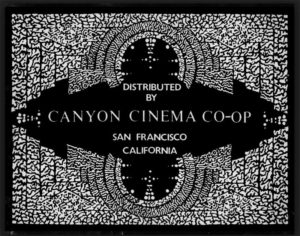 Program Notes: Rooftop Cinema
Program Notes: Rooftop Cinema
Canyon Cinema 50 Tour Digital Program | Various Artists | US | 1961-2012 | 73 minutes
Rooftop Cinema, Madison Museum of Contemporary Art, Friday, June 22, 9:30pm»
Rooftop Cinema continues its season with the first and only screening in Madison (so far) of the Canyon Cinema 50 Tour, a tribute to the historically important and still vibrant and crucial distributor of experimental films.
Canyon Cinema, based in San Francisco, California, is a nonprofit film and media arts organization that serves as one of the world’s preeminent sources for artist-made moving image work. 2017 marked its 50th anniversary. The organization celebrates this milestone through the Canyon Cinema 50 project, which includes international touring programs showcasing newly created prints and digital copies, and an educational website including new essays, ephemera, and interviews with filmmakers and other witnesses to Canyon’s 50-year history. (http://canyoncinema50.org/)
Curator David Dinnell, visiting faculty at California Institute of the Arts, has assembled a program exploring the depth and breadth of the Canyon Cinema catalog. Dinnell served as Program Director at the Ann Arbor Film Festival from 2010 to 2016.
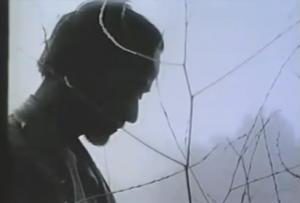 Mr. Hayashi | Bruce Baillie | 1961 | US | 3 minutes
Mr. Hayashi | Bruce Baillie | 1961 | US | 3 minutes
Bruce Baillie (b. 1931) began filmmaking in 1960, and he was a founding member of the Canyon Cinema group in 1961. His Castro Street (1966) was selected for preservation in the Library of Congress’ National Film Registry in 1992.
“One of the most perfect films that I’ve ever seen runs a total of three minutes,” begins Manohla Dargis’ brief New York Times portrait of Baillie in April, 2016. She then describes Baillie’s All My Life (1966), which was part of a retrospective of his work at the Film Society of Lincoln Center. You can watch Baillie introduce one of those screenings (along with scholar P. Adams Sitney) at the Lincoln Center website.
Max Goldberg at Fandor writes that “as much as his contemporary Stan Brakhage, Baillie developed a bold film language to convey visual phenomena outside the realm of dramatic realism.”
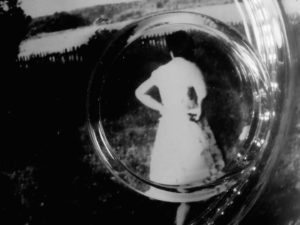 Arbor | Janie Geiser | 2012 | US | 7 minutes
Arbor | Janie Geiser | 2012 | US | 7 minutes
At her website, Janie Geiser describes herself as a multidisciplinary artist whose practice includes performance, film, installation, and visual art. Geiser is on the faculty of the CalArts School of Theater, and is a founding Co-Director of Automata, an artist-run performance gallery.
Geiser’s films are in the collections of MOMA, The NY Public Library’s Donnell Media Center, CalArts, and others. Her film The Red Book is part of the National Film Registry of the Library of Congress. The Academy of Motion Pictures Archive has selected her work for preservation, and The Fourth Watch (2000) was selected by Film Comment as one of the top ten experimental films of that decade. (www.janiegeiser.com/)
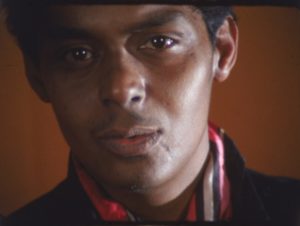 Akbar | Richard Myers | 1970 | US | 16 minutes
Akbar | Richard Myers | 1970 | US | 16 minutes
Richard Myers (b. 1937) has been an independent filmmaker since 1960. During his career he has won two Guggenheim Fellowships, an American Film Institute Grant, and a National Endowment for the Arts Independent Artist’s Grant for filmmaking. He has received First Prize film festival awards at the Ann Arbor Film Festival, the Kenyon Film Festival, and at the Chicago International Film Festival.
Myers is an Emeritus Professor, School of Art, Kent State University in Kent, Ohio, where he taught film production classes from 1964 to 1991. Akbar is a conversation with Ahmad Akbar (not his real name), an African-American filmmaker, friend friend of Myers, and former film student at Kent State University. (www.richardmyersfilms.com/)
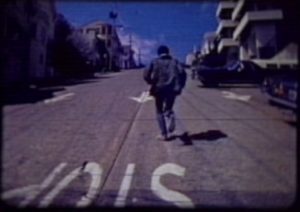 Degrees of Limitation | Scott Stark | 1982 | US | 3 minutes
Degrees of Limitation | Scott Stark | 1982 | US | 3 minutes
Scott Stark has produced more than 75 films and videos since 1980. Born and educated in the midwest, including time at the University of Wisconsin–Madison, he has always been interested in aggressively pushing his work beyond the threshold of traditional viewing expectations, challenging the audience to question its relationship to the cinematic process; yet he also tries to build into the work elements of humor and incongruity that allow the viewer an entryway into the work while maintaining a critical distance.
Stark describes how he made Degrees of Limitation: “A silent film made completely in about 15 minutes in San Francisco in 1982. With the 16mm Bolex camera mounted on a tripod, I wound the motor a single crank and ran as far as I could before the camera stopped (about 1 second). I returned and wound it 2 cranks and did the same, continuing the process, adding one more crank each time, getting a little farther up the hill each time, and getting a little more winded. The process was repeated until the camera ran out of film.”
Scott makes his living as a computer programmer and support specialist for a large multi-national corporation. He currently lives in Austin, Texas. In February 2012 Scott initiated an avant-garde film screening series in Austin called Experimental Response Cinema. (www.scottstark.com/)
 Chronicles of a Lying Spirit (by Kelly Gabron) | Cauleen Smith | 1992 | US | 6.5 minutes
Chronicles of a Lying Spirit (by Kelly Gabron) | Cauleen Smith | 1992 | US | 6.5 minutes
Cauleen Smith is an interdisciplinary artist whose work reflects upon the everyday possibilities of the imagination. Her work draws from a range of influences including structuralism, third world cinema, and science fiction. She earned a BA in Creative Arts from San Francisco Sate University and an MFA from the University of California, Los Angeles School of Theater Film and Television. While based in Chicago, Smith serves as faculty for the Vermont College of Fine Arts low-residency MFA program. (www.cauleensmith.com/)
According to critic Holly Willis in Variety, Chronicles of a Lying Spirit (by Kelly Gabron) “began as an installation made up of a series of photographs but Smith realized that she could take the images and put them together in a moving collage, then repeat the sequence of images almost exactly. The result is a film that layers voices and images, and addresses issues of subjectivity and history, but rather than being a boring or predictable self-portrait, Chronicles is lively and visually complex.”
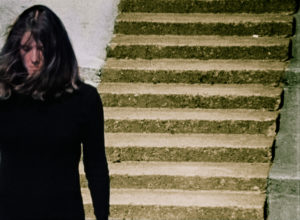 Saving the Proof | Karen Holmes | 1979 | US | 11 minutes
Saving the Proof | Karen Holmes | 1979 | US | 11 minutes
The critic Michael Sicinski describes Saving the Proof as a “cinematic answer to Michael Snow’s ‘Walking Woman’ paintings.
“The film is a fascinating application of structuralist technique to a set of Expressionist gestures,” Sicinski continues, “Holmes shows silhouettes of women walking, passing by various scenes and items, displaying different gaits. But eventually the women become pure form and movement, accompanied by a series of abstract contrapuntal sounds. Holmes’ film finally resembles much of the advanced video art of the period.”
In his book Dreams of Chaos, Visions of Order, James Peterson offers an advanced analysis of the structure underlying Saving the Proof: “After the titles, the film lays out three sets of three images that form its basic permutational set . . . the rest of the film repeats these images in increasingly complex variants. The order of the images is generally preserved, though it is sometimes systematically varied.”
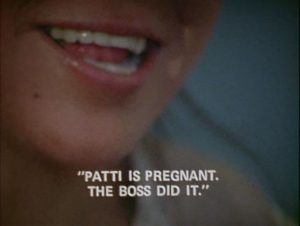 Fake Fruit Factory | Chick Strand | 1986 | US | 22 minutes
Fake Fruit Factory | Chick Strand | 1986 | US | 22 minutes
Chick Strand (1931-2009) (was another founding member of the Canyon Cinema group in 1961. Her films vary in style from abstraction to what critic Vera Brunner-Sung describes as “lyrical ethnography.”
“A student of anthropology who went on to study ethnographic film,” Brunner-Sung explains, “Strand is most often associated with her work documenting the people she encountered in Mexico, in and around the town of San Miguel Allende, Guanajuato. For years she spent her summers there, always with a 16mm camera in hand: Cosas de Mi Vida (1976), Fake Fruit Factory (1986) and Señora con Flores (1995/2011) are only a handful of the many portraits she created before her death in 2009.”
Strand described ethnographic filmmaking as “a means to get into other perspectives of the culture, to meet them, and to identify with them as fellow human beings.” Brunner-Sung concludes that Strand’s diverse output is permeated by this profound sense of humanity, of film as a tool for identification and relation, transcending time and culture.
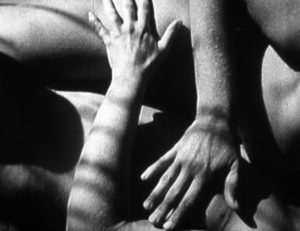 Dyketactics | Barbara Hammer | 1974 | US | 4 minutes
Dyketactics | Barbara Hammer | 1974 | US | 4 minutes
Artist statement from Barbara Hammer (b. 1939) at barbarahammer.com:
“As a visual artist who primarily uses film and video in experimental, nonlinear time based work, my practice includes performance, installation and digital photography. I embrace critical and formal complexity while promoting an active and engaged audience. Thematically, my work deconstructs a cinema that often objectifies or limits women. My work makes these invisible bodies and histories visible. As a lesbian artist, I found little existing representation, so I put lesbian life on this blank screen, leaving a cultural record for future generations.
The content and meaning of my work have evolved through forty years of work. In the seventies I created an aesthetic based on connecting sight and touch. Tactile imagery would make viewers physically involved while watching film and lead to greater involvement in the world (Dyketactics). In performance I mobilized the projector and made the audience move to ‘see’ the film (Available Space). I hoped that once an audience saw and felt in a ‘new’ way, they would become active in a local, national and global politic.”
The Canyon Cinema 50 project is organized by the Canyon Cinema Foundation and supported in part by the George Lucas Family Foundation, the Andy Warhol Foundation for the Visual Arts, National Endowment for the Arts, Owsley Brown III Foundation, the Phyllis C. Wattis Foundation and The Fleishhacker Foundation.

Rooftop Cinema is a program of MMoCA’s education department and is curated by James Kreul, with technical support provided by Tanner Engbretsen. MMoCA’s film programming is generously funded by maiahaus and Venture Investors, LLC.